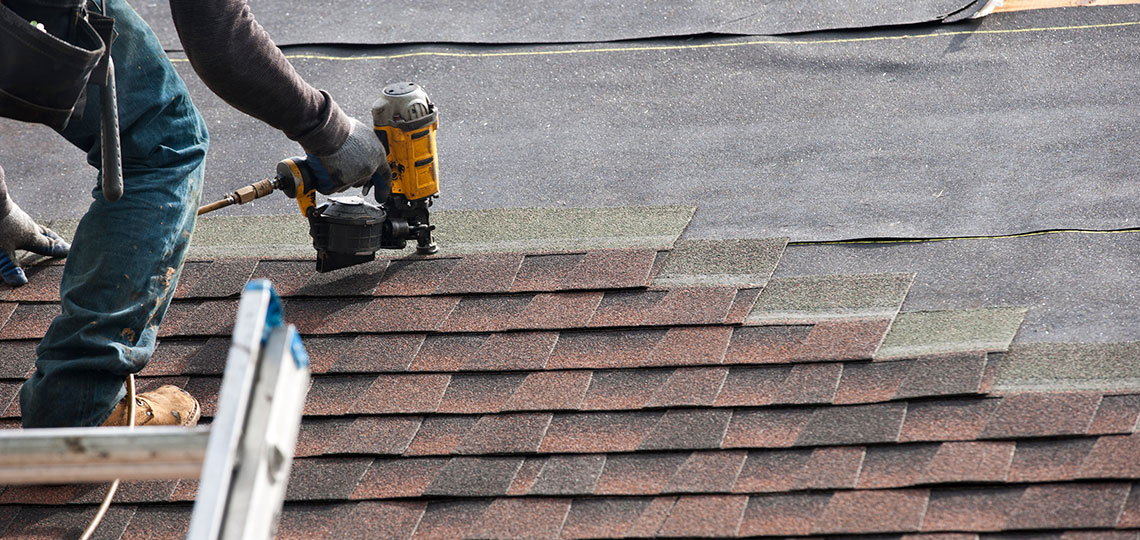The Relevance of Picking Experienced Roofing Companies Gainesville Florida
The Relevance of Picking Experienced Roofing Companies Gainesville Florida
Blog Article
Ideal Practices for Ensuring Proper Roof Covering Ventilation
Making sure correct roof air flow is vital for the longevity and performance of a roof covering system. A balanced intake and exhaust vent ratio, frequently 1:300, plays a pivotal function, with intake vents preferably placed at the reduced edge of the roofing for trendy air access and exhaust vents at the height for warm air exit. Normal inspections to recognize blockages and preserve clear air flow are critical. Moreover, keeping insulation away from vents is vital to stop airflow limitation. Comprehending these foundational aspects establishes the phase for more in-depth insights into installation and upkeep practices that can dramatically enhance your roof's performance.
Understand Air Flow Basics
Appropriately understanding ventilation essentials is vital for guaranteeing the longevity and performance of roof systems. Efficient air flow alleviates dampness buildup and temperature extremes in the attic, both of which can lead to significant architectural damages gradually. A well-ventilated roofing helps in stopping usual concerns such as mold development, wood rot, and ice dams, which can compromise the stability of the roof products and the underlying structures.
The key goal of air flow is to facilitate the movement of air, permitting for a regular exchange between the indoor and outdoor atmospheres. This balance is achieved with a mix of intake and exhaust vents that function together to preserve optimal air movement. Intake vents, generally located along the eaves or soffits, permit fresh air to go into the attic space, while exhaust vents, frequently positioned at or near the roof ridge, enable hot, moist air to run away.
Secret aspects affecting the effectiveness of roof air flow include proper positioning, ample sizing, and making sure that both intake and exhaust vents are unblocked. Normal evaluation and upkeep are vital to determine potential clogs, damage, or inadequacies in the air flow system, thereby safeguarding the roof covering's efficiency and resilience.
Kinds of Roof Covering Vents
Roof covering vents play an important duty in keeping reliable attic room air flow and, by extension, the total wellness of the roofing system. Different kinds of roof covering vents are available, each with special benefits customized to details roof needs.

Soffit vents are set up under the eaves and operate in tandem with roofing system vents to ensure a well balanced intake and exhaust system. By enabling cooler air to enter from below, soffit vents assist in the expulsion of warm air through top vents. Gable vents, located on the outside walls of the attic, deal an additional efficient solution, particularly in homes with saddleback roofs.
Analyze Your Current Ventilation

Next, consider the age and problem of your roofing products and air flow elements. Older systems might not conform with current building ordinance or may have deteriorated with time, decreasing their efficiency. Conduct a thorough exam to determine any indications of wear and tear, such as corrosion, damages, or spaces that can compromise the system's efficiency.
Additionally, determine the attic room temperature level and humidity degrees. High temperature levels and humidity can indicate insufficient air flow.
Setup Best Practices
Efficient installation of roof more helpful hints covering air flow systems is paramount for ensuring optimal performance and long life. Proper installation starts with comprehending the certain air flow demands of the building and the roofing system it covers. This includes computing the proper proportion of consumption to tire vents, typically sticking to the 1:300 policy, which stipulates one square foot of air flow for every 300 square feet of attic flooring space.

The positioning of vents is equally critical. Intake vents ought to be mounted at the roof covering's reduced edge, commonly in the soffits, to permit trendy air to get in. Exhaust vents, on the various other hand, should be set up near or at the roof's height to facilitate the departure of cozy, damp air. This develops a natural air flow that aids maintain temperature level and dampness balance within the attic room.
Seal all vent connections thoroughly to stop air leakages and potential water infiltration. Use top quality products and follow manufacturer standards to guarantee toughness and effectiveness. Furthermore, incorporating ridge vents with baffles can considerably improve air movement effectiveness by protecting against wind-driven rainfall and snow from getting in the attic.
Inevitably, precise setup of roofing air flow systems minimizes possible problems such as mold and mildew growth, ice dams, and structural damage, making sure the roofing's honesty and the building's total wellness.
Regular Upkeep Tips
Uniformity in maintenance methods is essential to making sure the lasting effectiveness of roof ventilation systems. Routine evaluations are critical, preferably performed biannually-- in the springtime and autumn. During these inspections, make certain that vents are devoid of debris, nests, and various other obstructions that could restrain air movement. Inspect for any indicators of moisture buildup or mold and mildew, as these can suggest improper air flow or leakages (gainesville fl roofing companies).
Utilize a soft brush or a vacuum to eliminate dirt and particles from intake and exhaust vents. Be cautious not to damage the air vent screens or louvers during the process.
Appropriate insulation is equally important. Ensure that attic room insulation does not block the vents, as this can drastically limit air flow. Reposition or replace it to keep a reliable obstacle. if any kind of insulation has shifted or resolved.
Last but not least, replace read the article any type of damaged or missing out on components promptly. Damaged vents, broken shingles, or scrubby flashing can all add to insufficient ventilation and ought to be addressed immediately. Routine maintenance ensures that the roofing ventilation system works optimally, thereby prolonging the lifespan of the roof itself.
Conclusion
Making sure correct roofing air flow is vital for keeping the efficiency and resilience of a roof system. Adherence to the 1:300 intake and exhaust vent proportion, paired with the calculated positioning of vents, is essential. Regular biannual evaluations, debris cleaning, and making sure insulation does not block airflow are critical methods. Applying these ideal techniques will cultivate a well-ventilated roof, thereby reducing potential concerns related to moisture accumulation and extreme warmth, inevitably extending the roofing's life-span.
A well balanced consumption and exhaust air find here vent ratio, frequently 1:300, plays an essential role, with intake vents preferably put at the lower edge of the roof covering for cool air entrance and exhaust vents at the optimal for warm air exit. Intake vents, normally located along the eaves or soffits, enable fresh air to get in the attic area, while exhaust vents, frequently positioned at or near the roofing system ridge, allow warm, moist air to get away.
Soffit vents are installed under the eaves and work in tandem with roof covering vents to make certain a well balanced intake and exhaust system. By allowing cooler air to enter from below, soffit vents assist in the expulsion of warm air through top vents. Adherence to the 1:300 intake and exhaust air vent ratio, combined with the tactical positioning of vents, is essential.
Report this page